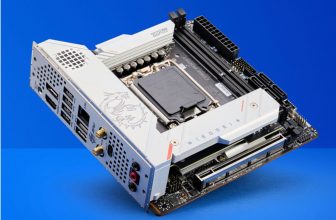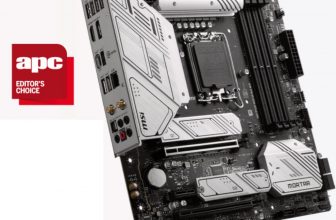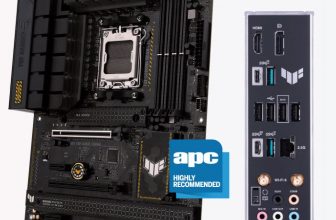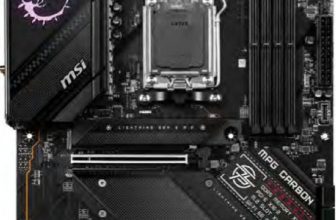ASROCK X670E STEEL LEGEND Review
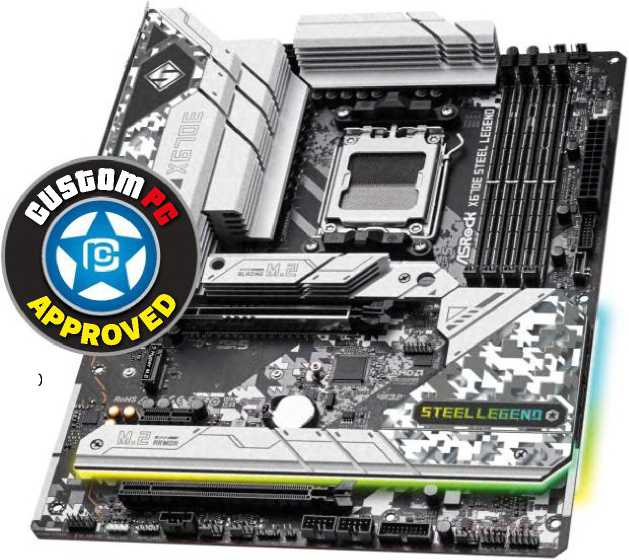
If you’re after a more affordable Socket AM5 option than the £ Taichi, ASRock also has the X670E Steel Legend, which will give you change from £ and isn’t as eye-wateringly expensive. In fact, in terms of appearance, we even think the Steel Legend looks a little sexier than the surprisingly dull-looking Taichi, with the Legend sporting S-shaped light-silver heatsinks and more extensive use of RGB lighting. Read our ASROCK X670E STEEL LEGEND Review.
X670E MOTHERBOARD
ANTONY LEATHER
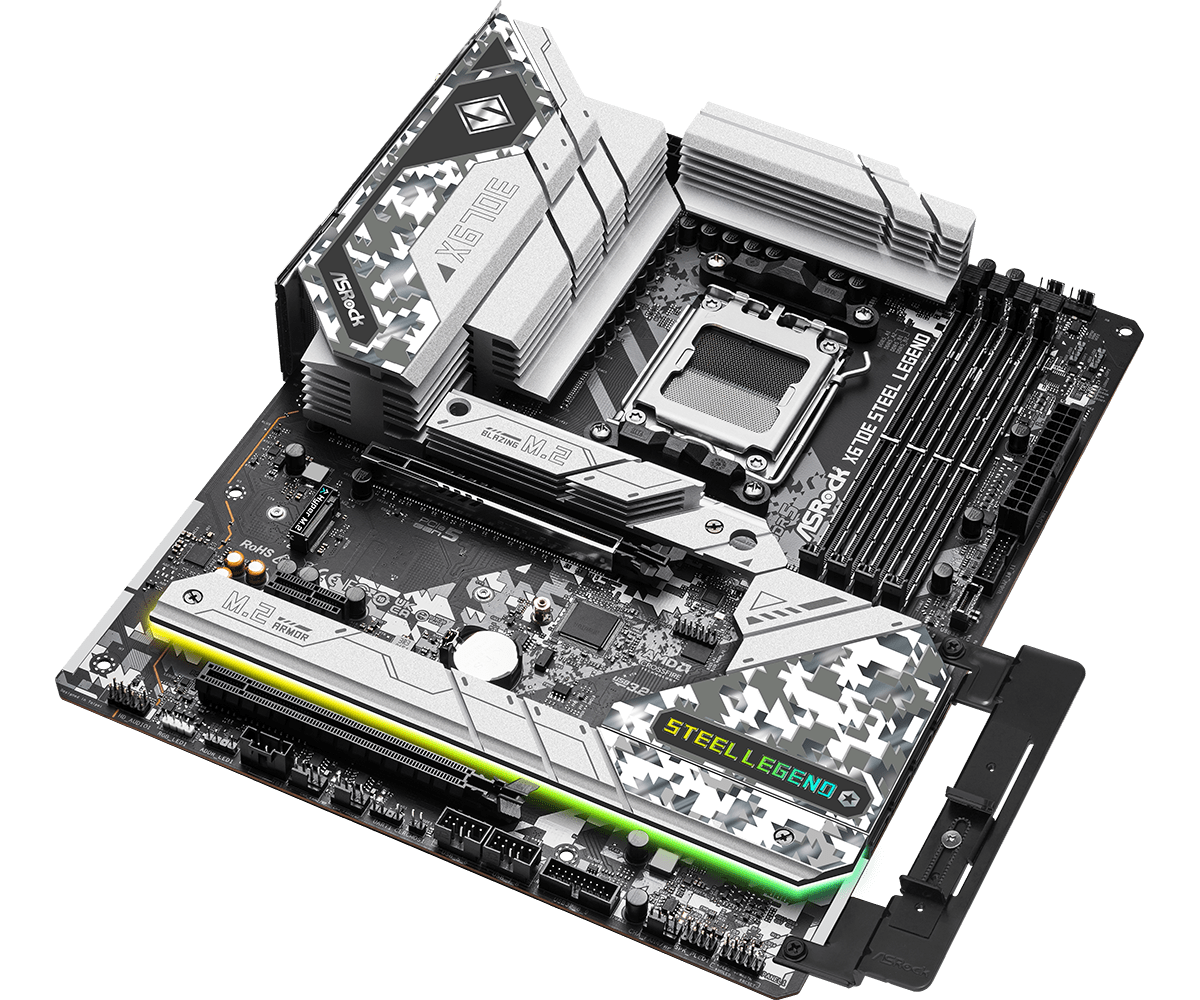
The £ price drop from its more expensive sibling sees Thunderbolt 4 and USB 4 support vanish, but there’s still a PCI-E 5 M.2 port that’s equipped with a tall heatsink as standard. This kept our PCI-E 4 SSD at a peak of 6TC under load, which is a tad warmer than the X670E Taichi.
SPEC
| Chipset | AMD X670E |
| CPU socket | AMD Socket AM5 |
| Memory support | 4 slots: max 128GB DDR5 (up to 6600MHz) |
| Expansion slots | One 16x PCI-E 5, one 16x PCI-E 3, one 1x PCI-E 3 |
| Sound | Realtek ALC1220 |
| Networking | 1 x Realtek Gigabit LAN, 1 x Realtek 2.5Gbps LAN, 802.11ax Wi-Fi |
| Cooling | Six 4-pin fan headers, VRM heatsinks, M.2 heatsinks |
| Ports | 4 x SATA 6Gbps, 1 x M.2 PCI-E 5, 3 x M.2 PCI-E 4, 1 x USB 3.2 Gen 2 2×2 Type-C, 1 x USB 3.2 Gen2 Type-A, 6 x USB 3 Type-A, 1 x USB 3.2 Gen 2×2 Type-C header, 1 x audio out, 1 x mic, 1 x S/PDIF out |
| Dimensions (mm) | 305×244 |
Weirdly, while the lower M.2 slot has a larger heatsink than the top one, the 7,349MB/sec read and 6,874MB/sec write speeds we saw in the top port fell by a few hundred megabytes a second with the same SSD in the bottom port, despite the SSD actually running a few degrees cooler. If you have a fast SSD, you’ll want to use it in the top port, and attach the heatsink. You still get four M.2 ports in total too, with the other four being PCI-E 4-compatible and two of them being equipped with heatsinks.
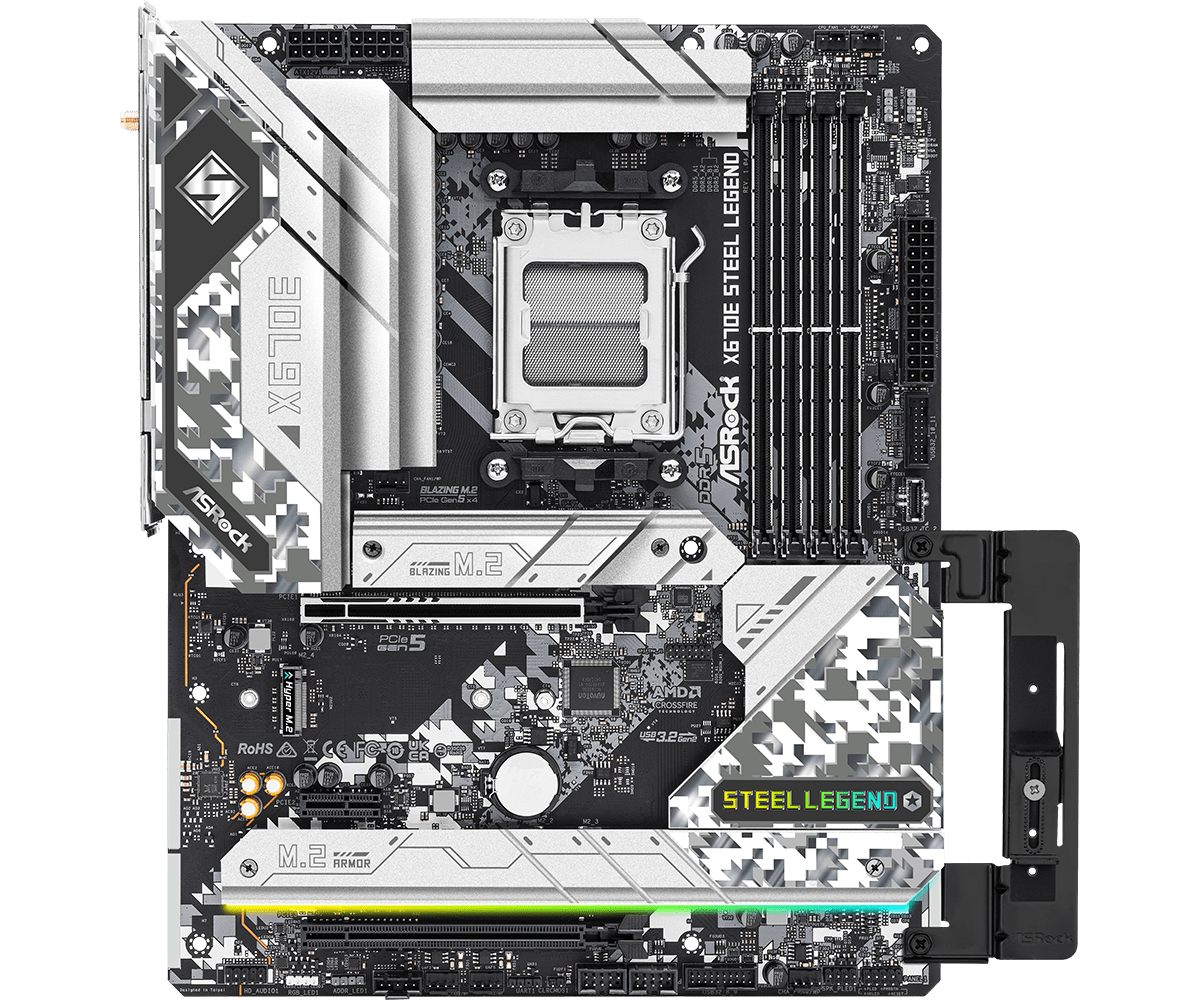
Meanwhile, the power delivery is slightly dumbed down compared with the Taichi, but the Legend still boasts a total of 19 phases with some fairly beefy heatsinks. These certainly got toasty, but the VRMs were kept below 60°C according to our IR probe. Irritatingly, ASRock had removed a handy VRM readout in its software for this board, which was included with the X670E Taichi.
Unlike the Taichi, there’s no fan to assist the VRM cooling, but you get a fairly standard count of six 4-pin fan headers to power case fans. The rear I/O panel is very well equipped, though, and while there’s no Thunderbolt or USB 4, you get a generous tally of 11 Type-A USB ports, seven of which are USB 3 or faster. One of these supports USB 3.2 Gen 2, and there’s also a high-speed USB 3.2 Gen 2×2 Type-C port, with a corresponding front panel header on the PCB for compatible cases.
The rear I/O panel also sports two LAN ports, the fastest of which supports 2.5Gbps Ethernet, and you get 802.11ax Wi-Fi as well. ASRock has again cut back on audio outputs here, with just microphone and stereo speaker jacks in addition to an optical output for the Realtek ALC1220 audio.
Sadly, this board lacks most overclocking and testing tools as well, but does at least have a BIOS flashback button, so if you pick the board up in a year or two and drop in a future CPU, you’ll be able to update the BIOS even if the existing one doesn’t support your new CPU.
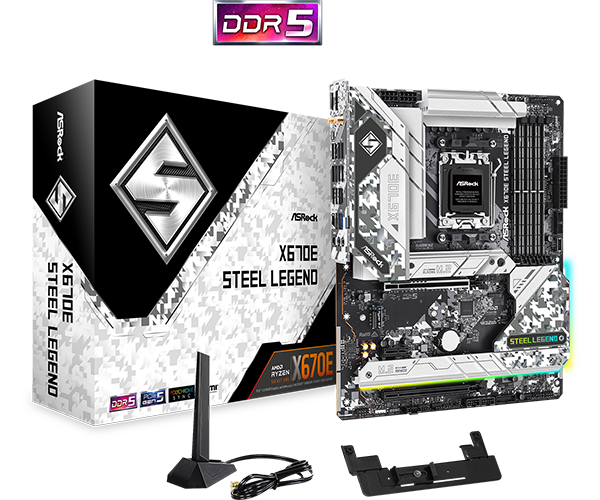
The Legend offers an extra display output over the X670E Taichi as well, with both HDMI and DisplayPort outputs, although the latter could use its Thunderbolt ports for this purpose if need be.
Another cutback from the pricier board this month are the SATA 6Gbps ports, with four rather than eight being included, although four is enough for most people. The board is slightly more flexible with PCI-E slots too, with a single 16x PCI-E 5 slot, a 16x PCI-E 3 slot at the bottom of the PCB and a 1x PCI-E 3 slot between them.
Performance
The Steel Legend’s audio performance was fairly typical for the Realtek ALC1220 codec, with RightMark Audio Analyzer returning a noise level of -98.3 dBA and dynamic range of 98.4dBA along with a total harmonic distortion (THD) of 0.228 per cent, which are perfectly adequate for music and gaming.
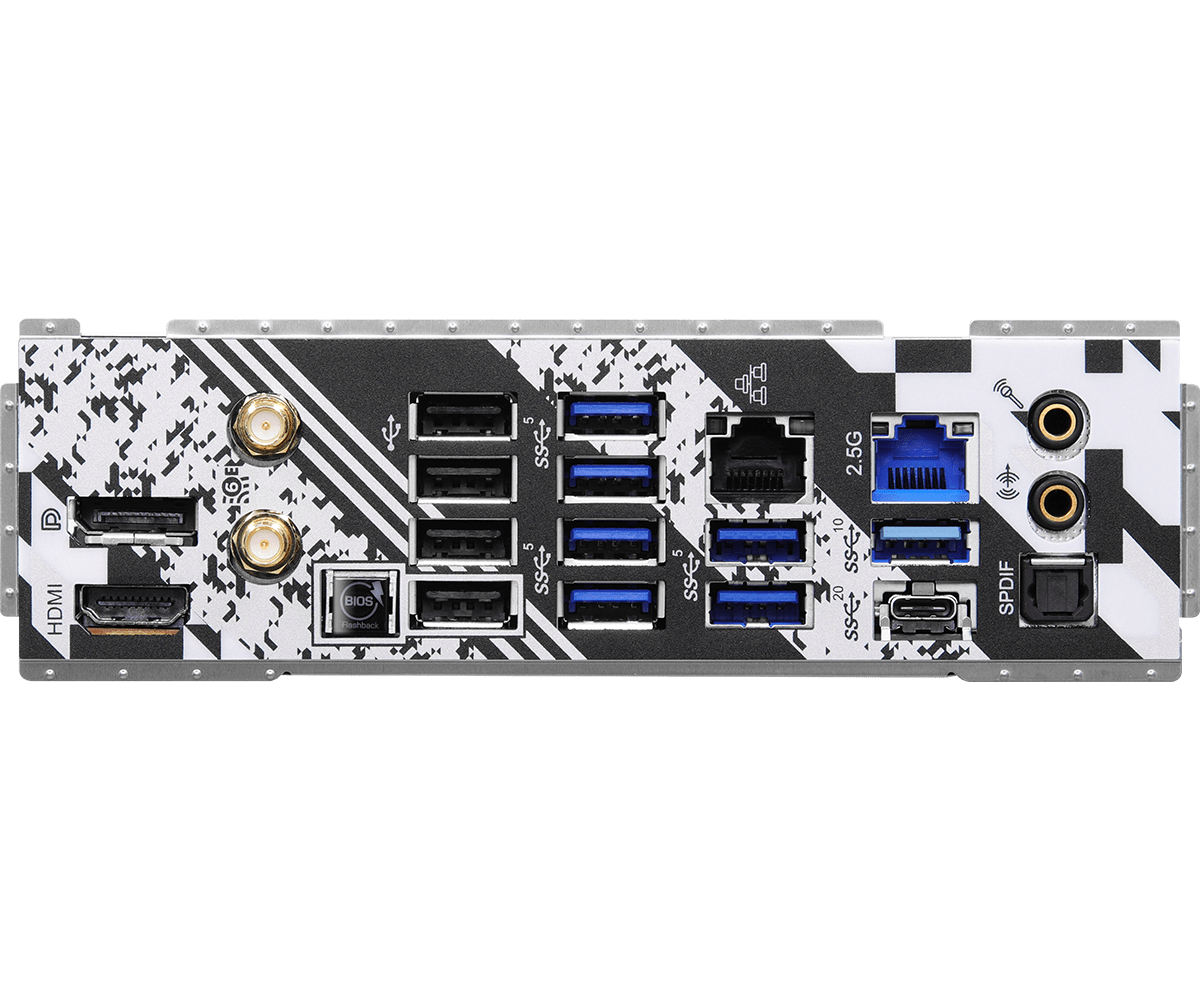
Heading into benchmarks, and the board actually added over 100 points to the Cinebench R23 multithreaded test score of the X670E Taichi, scoring 38,550, while returning a near identical RealBench system score of 497,096 too, so it seems perfectly happy to deal with our mighty Ryzen 9 7950X test CPU.
The EFI was basic, as we’ve come to expect from ASRock, but all the necessary settings were there to take advantage of AMD’s interesting Eco mode, as well as Precision Boost Overdrive. The CPU and memory frequencies, as well as voltage settings, are now all on the same page in the EFI too, which is handy for overclocking.

Conclusion
If you want premium features such as top-notch VRM cooling, Thunderbolt 4 and USB 4, as well as massive heatsinks to cool PCI-E 5 SSDs, you’ll need to reach deeper into your wallet than the £ asking price of the X670E Steel Legend. However, the fact it coped fine with AMD’s 16-core flagship and still boasts PCI-E 5 support for nextgeneration SSDs, and has practically every other feature most people could need, means the X670E Steel Legend is ultimately one of the most affordable premium X670E motherboards available.
It offers much better value for money than the X670E Taichi, it still has decent audio performance, there are plenty of USB ports and it has a decent design too. The only factors to consider are the lacklustre M.2 speeds in the lower ports, and a lack of on-board overclocking and testing tools. Apart from these small issues, it’s a decent (if overpriced) buy.
VERDICT
When you purchase through links on our site, I may earn an affiliate commission. Here’s how it works.




